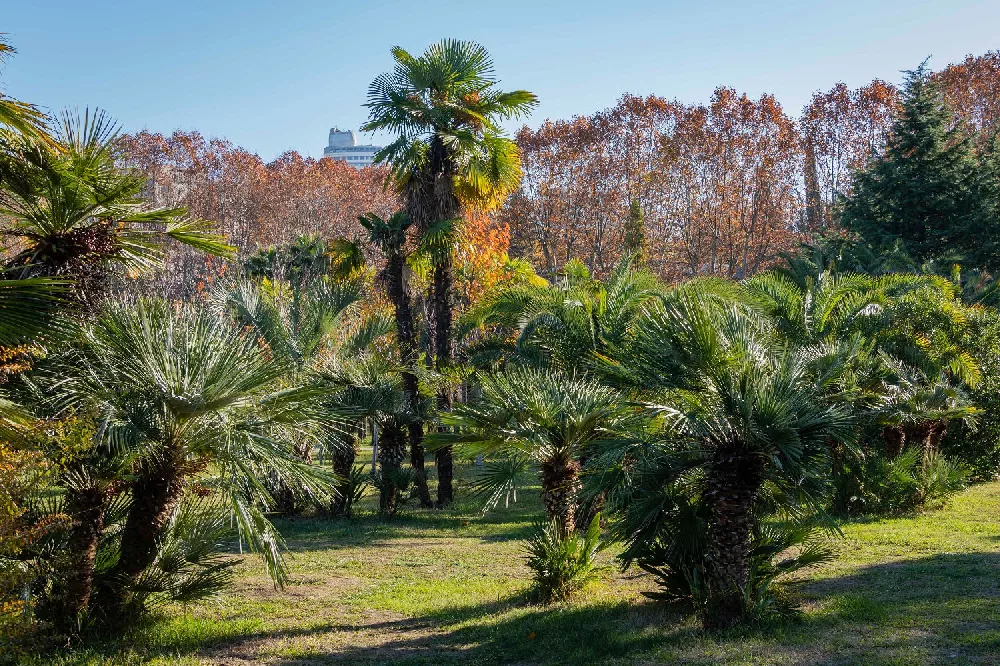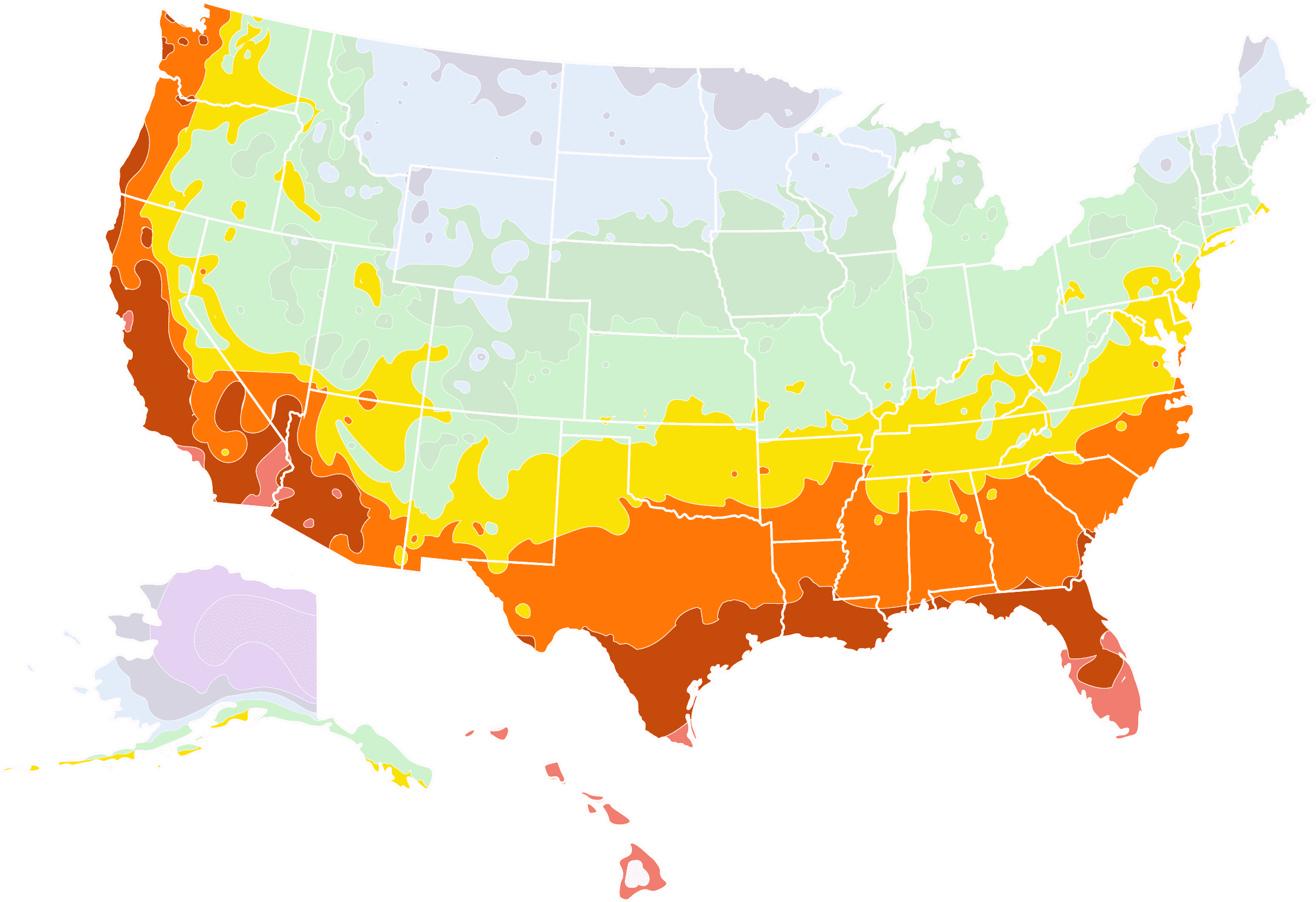- Home >
- Palm Trees >
- Windmill Palm
Windmill Palm for Sale - Buying & Growing Guide
- Ships in 1-2 days
- 1-Year Warranty Eligible
- Pots or accessories are not included unless specified in the product options.
Shipping Details:
Products shipped through FastGrowingTrees.com. Once your order is shipped, you’ll receive an email with a tracking number and estimated delivery date. Most orders will ship immediately.
The windmill palm (Trachycarpus fortunei) is a hardy tree and exceptionally easy to maintain. Its common name is based on its long, fan-shaped leaves that are reminiscent of a windmill. The species can withstand some of the hottest summers, while also tolerating cold temperatures as low as 10 degrees Fahrenheit. Windmill palms create ornamental appeal and bring tropical vibes to any landscape.
- Windmill palm trees are drought-tolerant and disease-resistant.
- Can reach 20 feet in height or more, with 3-foot-long leaves.
- The species can be grown outdoors or in containers.
Plant Care
Sunlight

In northern climates, windmill palms like full sun, 6-8 hours a day; in hotter climates, partial shade is best.
Watering
Windmill palms don't like wet soil. Water once a week during dry weather, and daily for newly-planted trees.
Fertilizing

Use a slow-release fertilizer formulated for palm trees throughout the growing season.
Planting and Care
Planting instructions
Windmill palm trees prefer a planting site that receives full or partial sun. Start by digging a hole that is as deep as the root system and twice as wide. Place the palm tree gently in the hole, keeping it upright, with the top of the root ball at the same height as the soil. Backfill the hole with soil, water thoroughly, and cover with mulch to retain moisture in the tree’s early stages. In colder climates, you may grow windmill palms in containers and bring them indoors for winter.
Watering and nutrients
Newly planted windmill palm trees require deep watering every other day. Once established, water the trees once per week in most areas — arid climates call for waterings twice weekly. To determine if the tree needs water, place your finger in the soil near the base about two to three inches deep. If the soil feels dry to the touch, the tree is due for a watering. If your soil lacks nutrients, feel free to add a slow-release palm fertilizer each year as indicated in package directions.
Pruning
Windmill palm trees require little to no pruning — the only requirement is to remove dead, dying, and diseased fronds as they appear. To prevent stress on the tree, try not to remove too many fronds at once. Always cut the stems a few inches away from the trunk to avoid unnecessary injury to the tree. Be sure to clean up fallen fronds, as they can provide a home for various animals and pests. They may also become a fire hazard.
Pests and diseases
The windmill palm is resistant to most pests and disease, making it a relatively easy plant to maintain. Leaf spots and yellowing are signs of infestation and disease — remove infected fronds as they appear. Windmill palms will not tolerate excessively moist soil and may suffer from root rot if improperly planted. While palm aphids are not a common problem, you can still take preventative measures by planting nasturtiums, cosmos, zinnia, and other aphid-repelling plants around the area where your palm tree is planted.
FAQs
How large do windmill palm trees grow?
What is the windmill palm tree used for?
Today, the windmill palm tree is widely used as an ornamental plant. However, in its native land of China and other nearby countries, the species has a history of practical use. As the tree grows, coarse trunk fibers are left behind by the leaf sheaths. These fibers are then harvested and used in ropes, brushes, and other household items. Other parts of the tree are used in the crafting of artificial palm trees. These industrial uses have led to the tree receiving an alternative nickname: the hemp palm.
What palm species are similar to the windmill palm?
Trachycarpus takil, commonly referred to as the Kumaon palm, is closely related to the windmill palm tree. The Kumaon palm is not nearly as popular as T. fortunei, but is similar in appearance and can tolerate colder temperatures. Trachycarpus wagnerianus is a nearly identical species, aside from its smaller stature. This has led to its classification as a dwarf-sized cultivar of T. fortunei. The dwarf variety even hybridizes with the windmill palm, creating a fertile, mid-sized palm tree.
Why is my windmill palm turning brown?
Most gardeners will encounter browning fronds on their palm trees at one point or another. Older leaves have a natural tendency to turn brown and shed away — this is completely normal. An overabundance of fertilizer can cause the tips of fronds to turn brown. This is prevented by only applying fertilizer during active periods of growth. Fronds may also turn brown during periods of extreme temperatures, so they may require some form of protection at these times. Under-watering will cause the entire plant to turn brown. Always water thoroughly and check the soil moisture frequently.
Compare Similar Products
Customer Reviews
 Replacement
ReplacementWonderful! As soon as I notified I was missing 2 palm trees, they immediately replaced them and them within 5 days! Wonderful customer service!!
 Please overall but some packaging damage
Please overall but some packaging damageOverall I am pleased with the tree although there is some damage to the fronds from the packaging. The tree was packaged in the same box as another tree. I expect the tree to recover fully and overall I am pleased with the size and look of the tree.
 Palms
PalmsGreat customer service.
 So small
So smallThe tree is alive and seems to be doing fine. Couldn't believe how small it is though. Will take a few years to look like the one in the photo
 Windmill Palm Trees
Windmill Palm TreesThey arrived shorter than I expected but you can see new growth forming so hopefully it won't be too long before they reach the advertised height! Roots were healthy and well developed.
 Health tree
Health treeA healthy tree was delivered and has adapted well









